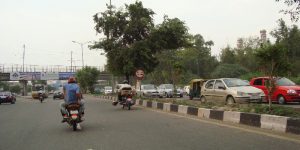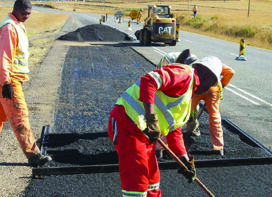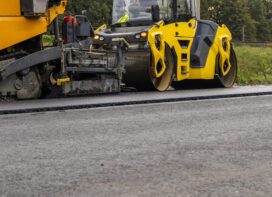 Speed has the great advantage that it relates to all potential risks, irrespective of environmental factors, infrastructure, road users’ status or any other risk-related factor. The strong relationship between speed and the risk of crashes/injuries works twofold: lower the travel speed, the greater the chance of detecting a potential hazard and thereby preventing a crash or decreasing impact speed, says Dhreendra Samineni, theTeam Leader cum Road Safety Specialist (World Bank Project) and Chief Trainer- Safe Drive India.
Speed has the great advantage that it relates to all potential risks, irrespective of environmental factors, infrastructure, road users’ status or any other risk-related factor. The strong relationship between speed and the risk of crashes/injuries works twofold: lower the travel speed, the greater the chance of detecting a potential hazard and thereby preventing a crash or decreasing impact speed, says Dhreendra Samineni, theTeam Leader cum Road Safety Specialist (World Bank Project) and Chief Trainer- Safe Drive India.
History:
 The death of Bridget Driscoll (c. 1851 – 17 August 1896) was the first recorded case of a pedestrian killed in a collision with a motor car in Great Britain. Driscoll, in the company of her teenage daughter May and her friend Elizabeth Murphy, crossed Dolphin Terrace in the grounds of the Crystal Palace in London when Driscoll was struck by a car belonging to the Anglo-French Motor Carriage Company that was being used to give demonstration rides. One witness described the car as travelling at “a reckless pace, in fact, like a fire engine”.
The death of Bridget Driscoll (c. 1851 – 17 August 1896) was the first recorded case of a pedestrian killed in a collision with a motor car in Great Britain. Driscoll, in the company of her teenage daughter May and her friend Elizabeth Murphy, crossed Dolphin Terrace in the grounds of the Crystal Palace in London when Driscoll was struck by a car belonging to the Anglo-French Motor Carriage Company that was being used to give demonstration rides. One witness described the car as travelling at “a reckless pace, in fact, like a fire engine”.
Although the car’s maximum speed was 8 miles per hour (13 km/h), it had been limited deliberately to 4 miles per hour (6.4 km/h), the speed at which the driver, Arthur James Edsall of Upper Norwood, claimed to have been travelling. His passenger, Alice Standing of Forest Hill, alleged he modified the engine to allow the car to go faster, but another taxicab driver examined the car and said it was incapable of exceeding 4.5 miles per hour (7.2 km/h) because of a low-speed engine belt. The collision happened just a few weeks after a new Act of Parliament had increased the speed limit for cars to 14 miles per hour (23 km/h), from 2 miles per hour in towns and 4 miles per hour in the countryside.
The jury returned a verdict of “accidental death” after an inquest lasting some six hours. The coroner, Percy Morrison (Croydon division of Surrey), said he hoped “such a thing would never happen again.”

Speeds are designed as per road and traffic conditions. To drive in a particular speed, we need to fulfill following conditions.
- Our condition (Road User: No fatigue / Drunk etc)
- Vehicle condition (well maintained vehicle)
- Road condition (CC, Tar, mud Rd. etc)
- Traffic condition (Road environment)
- Weather conditions and
- Over all Traffic speed limit
You should always keep your speed below the maximum speed limit for the road you are driving on. Although you are not legally obliged to drive at the maximum speed limit, if it is safe to do, you should try and drive at a speed that at least approaches it, for instance, in a 40km zone your speed should be between 35 and 40km.
Driving too slowly can be as dangerous as driving too fast. The driver who drives along a 60km road at 40km causes tailbacks and frustration. This can lead to dangerous overtaking manoeuvres and other road safety issues.
Speed in itself is not that dangerous, inappropriate speed is. Always take into account the weather and road conditions. Driving at 60km, even though you are legally entitled to do so, when there is water on the road is dangerous and inappropriate, as is driving at 40km on a dual carriageway when the weather is fine.
Stopping Distances
The distance, over which you can bring a vehicle to a stop, the stopping distance, depends on four factors.
- The speed at which you are travelling
- The thinking distance – the time it takes you to think about stopping and hit the brakes
- The braking distance – the time it takes for the vehicle to come to a stop after you have applied the brakes. As a general rule, on a good dry road, you can work out the braking distance.
- The weather conditions – dry roads mean shorter braking distances, wet and icy mean longer braking distances
Formula
Reaction Distance (V/10 X 3) + Braking Distance (V/10 X V/10) = Stopping Distance
i.e V (speed of the vehicle) = 30km then 9+9=18 meters stopping distance.
The Campaigns:
UN Road Safety Week 2021 adopted 30 km/h (20 mph) streets save lives and protect all who use them, especially the most vulnerable, like pedestrians, cyclists, children and older people and people with disabilities.
30 km/h streets where people and traffic mix help prevent road traffic deaths and promote physical activity because when streets are safe, people walk and cycle more.
30k km/h policies will help achieve the SDGs
The WHO report of 2018 also says a traffic mixed with non-motorised has to maintain the speed limit below 30kmph.
Enforcement:
- Challans with high fees.
- Speed display on road side.
- Ensure vehicles fitted with GPS system and monitored timely from a control room.
 TrafficInfraTech Magazine Linking People Places & Progress
TrafficInfraTech Magazine Linking People Places & Progress


